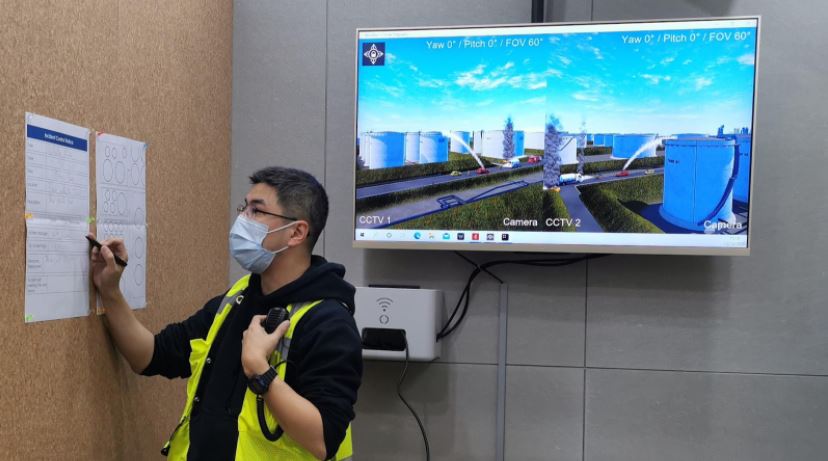Developing Company Emergency Managers by VR Technology
Sponsored Article by Bruce Wong
Bruce Wong – FIIRSM, CMIOSH
Nowadays, virtual reality (VR) is common and widely used in different industries, such as medical, emergency services, and construction. It provides a real experience for the trainees, breaking the limitation of environment and time. For learning purposes, episodic memory enables people to consciously recall experiences within their spatial and temporal environments.
In many countries, practitioners in high-risk industries intend to use VR to train and practice emergency procedures and protocols. Trainees are required to select correct protocols in a simulated incident. If failed to do so, they can experience the severe consequence of an incorrect act, for realizing the importance of correct procedures. For example, the fire will be intensified if the wrong type of fire extinguisher was selected in the simulated fire incident.

Emergency preparedness has gained prominence because rapid and correct response helps to reduce injuries, illnesses, property damage, environmental harm, and public concern in an emergency (Labour Department, 2002). It is also the reason why Emergency preparedness is one of the elements of Safety Management. In Singapore, Company Emergency Response Team (CERT) is to mitigate and control an emergency during the initial stages before emergency services’ arrival and also to ensure operational synergy between the CERT and emergency services according to the local legislation (Singapore Government, 2005). To achieve this, a fully competent emergency manager is playing an important role in emergency preparedness.
How to develop the Emergency Managers?
The International Association of Emergency Managers defines an emergency manager is responsible for coordinating the plans of the various components of the emergency management system. But how to develop a fully competent emergency manager? In tradition, we can train a person to become an emergency manager through theory training with excellent field practice.
In general, there are two types of exercise, that is on-site exercise and table-top exercise. On-site exercise is vital, but as well known, “real accidents” are difficult to be simulated. We cannot set a fire explosion in a chemical plant or push a tower crane down on a construction site. Even if we can do it, it still involves huge resources, time, and manpower. Therefore, table-top exercise is an effective opinion. Repeated scenario-based training to ensure the trainees get to experience in a controlled and simulated environment.

The shift from Paper to Virtual View
In conventional table-top exercise, the trainees need to make complex decision making, coordinate with different stakeholders and deploy many resources, based on pictures, pre-recorded videos, or even imaginations. Performance and experience will be greatly reduced. These prepared materials would restrain the exercise controllers to make a flexible response.
In the new century, we can fill the gap with VR technology. Various scenarios that are difficult to duplicate in a real setting can also be simulated, such as a serious fire in a chemical plant, traffic accident on the highway, flooding in a shopping mall… etc, bypass the high costs and dangers associated with on-site training.
There are two types of VR, i.e. Immersive VR and Non-Immersive VR. The former need trainees to use a headset with sensors to experience 360-degree panoramic vision and fully integrate into the simulated environment. The trainees of the latter need to view the images on the screen, it keeps the trainees maintain awareness of the environment outside of VR. They can use a joystick or keyboards for movement.
For the table-top exercise, Non-Immersive VR is commonly used. Let me set an example for an exercise of a fire incident in a chemical plant. A group of trainees can act in different roles, such as company emergency manager, police, and fire services, to view the same simulated virtual environment on the projector screen and interact in exercise and practice the procedures of information exchange, assessment and monitoring as well as activate the contingency plan and dissemination of information. They can “walk” around the scene for observation too! Their decision will affect the result and display in the VR environment immediately. For example, if the participants are not aware that some inflammable substances near the fire ground, the rapid spread of fire will be led.
